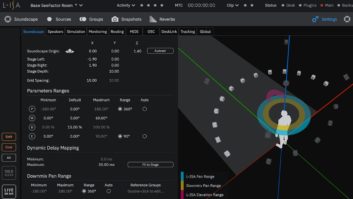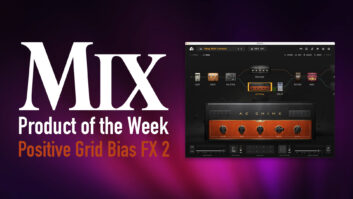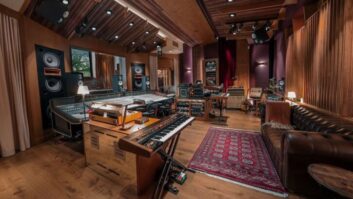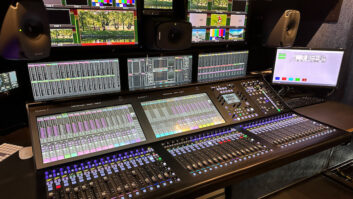Award-winning sound team reunites for more mischief.
Currently in worldwide release from Columbia Pictures, Director Will Gluck’s Peter Rabbit 2: The Runaway is the charming sequel to the 2018 hit about a bunny who’s a loveable rogue. Much of the creative team from the first film reunited for the new movie, including its award-winning sound team led by Re-Recording Mixer Kevin O’Connell, Supervising Sound Editor Robert Mackenzie and Re-Recording Mixer/Supervising Andy Wright.

O’Connell, Mackenzie and Wright, who prepared the final mix at Sony Pictures Post Facilities in Culver City, faced the formidable challenge of constructing a soundscape to match the unique world inhabited by Peter, his family and friends. The film’s visuals are a stunning blend of live action and animation with the talking, computer-animated rabbits woven seamlessly into real-life surroundings. The results appear perfectly natural and magical at the same time.
The sound team’s goal was to draw the audience into Peter’s world. “Will Gluck wanted people to believe they are in an English countryside where there is nothing more natural than talking rabbits,” explains O’Connell, whose past collaborations with Mackenzie and Wright also included Hacksaw Ridge, which brought them a 2017 Academy Award for Sound Mixing. “People should be completely caught up in the whimsical adventure.”

While in most animated films, sound editorial occurs before picture editorial, Peter Rabbit 2: The Runaway followed a workflow akin to a traditional live action film. Working in Australia where production of the film was based, Mackenzie and Wright cut dialogue and sound effects to match the edited picture. Wright explains that this approach made sense as the background environments were real. It also conformed with Gluck’s desire for cinematic realism.
“Our focus was on supporting the picture edit so that Will could see how the crux of the movie was coming together,” Wright explains. “The early edits had the actors’ voices and 2D drawings of the characters, but the illusion wasn’t all there until the footsteps and atmospherics were added.”
Mackenzie says that the background soundscapes were as detailed and rich as in any fully live action film. The Foley sound effects created for Peter and the other animated creatures were designed to mimic real-life animal sounds. “Will didn’t want any sort of cartoony sounds associated with Peter or the other rabbits,” he explains. Everything is very real. The rabbits are animated but they don’t look animated, and the sound does a lot of the work in grounding them in reality.”

In preparing dialogue, Mackenzie and Wright took the unusual step of recording short vocalizations—coughs, sneezes, yelps, etc.—to give the picture editors creative flexibility and accommodate script changes. “We built up a large library of those effects and used them throughout the film,” Wright notes. “If a line was rewritten or changed, we’d cut something together to make the timing work.”
Final mixing was done in Dolby Atmos in Sony Pictures’ 229-seat William Holden Theater with O’Connell at the controls of an Avid S6 console. Wright says the room was the perfect space for building a dimensional sonic experience. “The mix stages at Sony are awesome and supported by a wonderful engineering team,” he observes. “You can feel the history in the room.”
O’Connell says that Gluck was deeply involved in the mix sessions and keenly interested in using the nuances of sound to advance the story, heighten realism and underscore humor. “We were always on the same page,” he recalls. “Will was intent on maintaining a natural feel and instantly took note of anything that didn’t fit that aesthetic. He’s a hands-on director but left room for us to apply our craft and deliver a film that’s funny, fast-paced and ultimately inspiring.”
Peter Rabbit 2: The Runaway is currently playing in theaters around the world and has grossed over $126 million globally.







